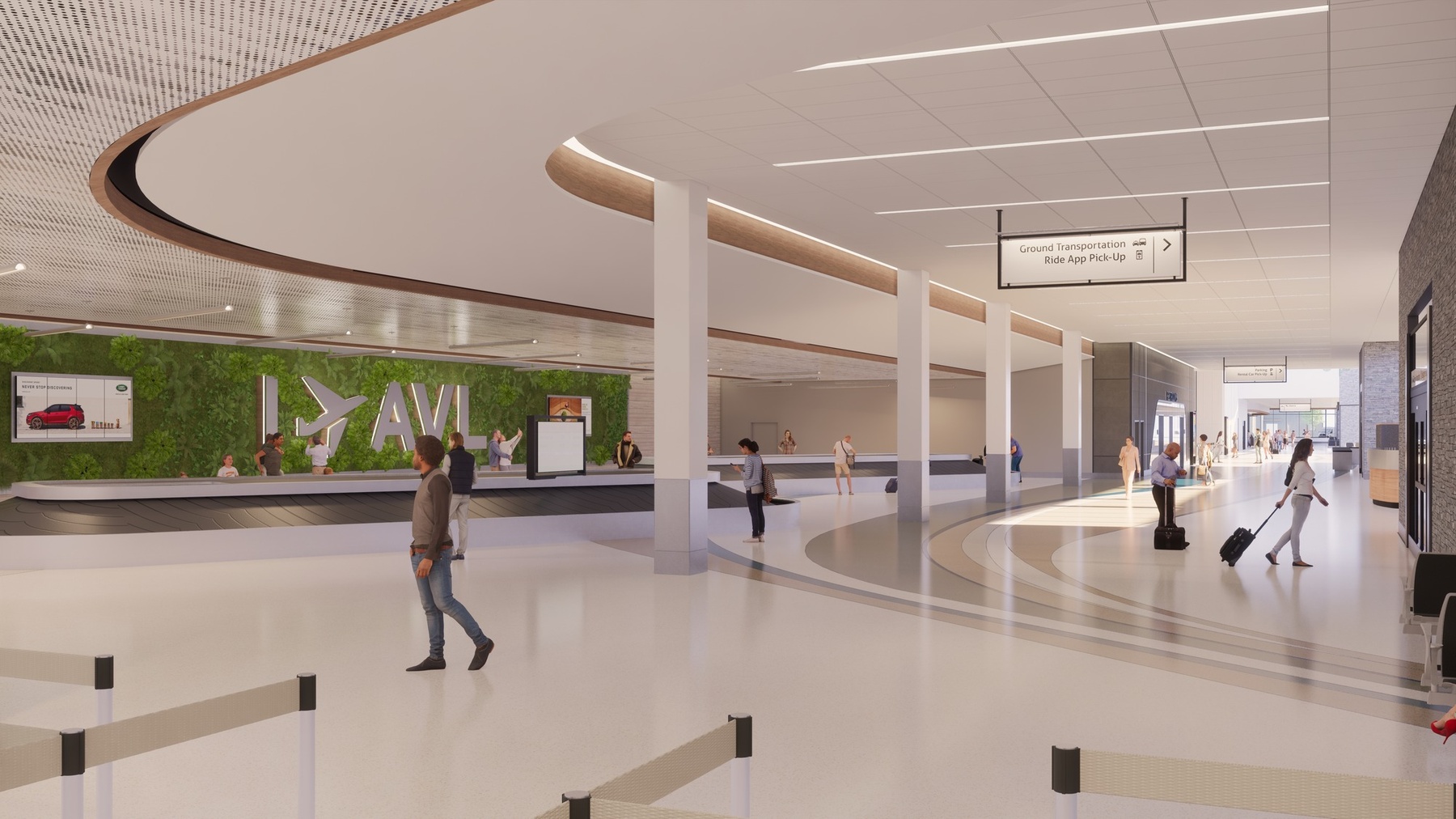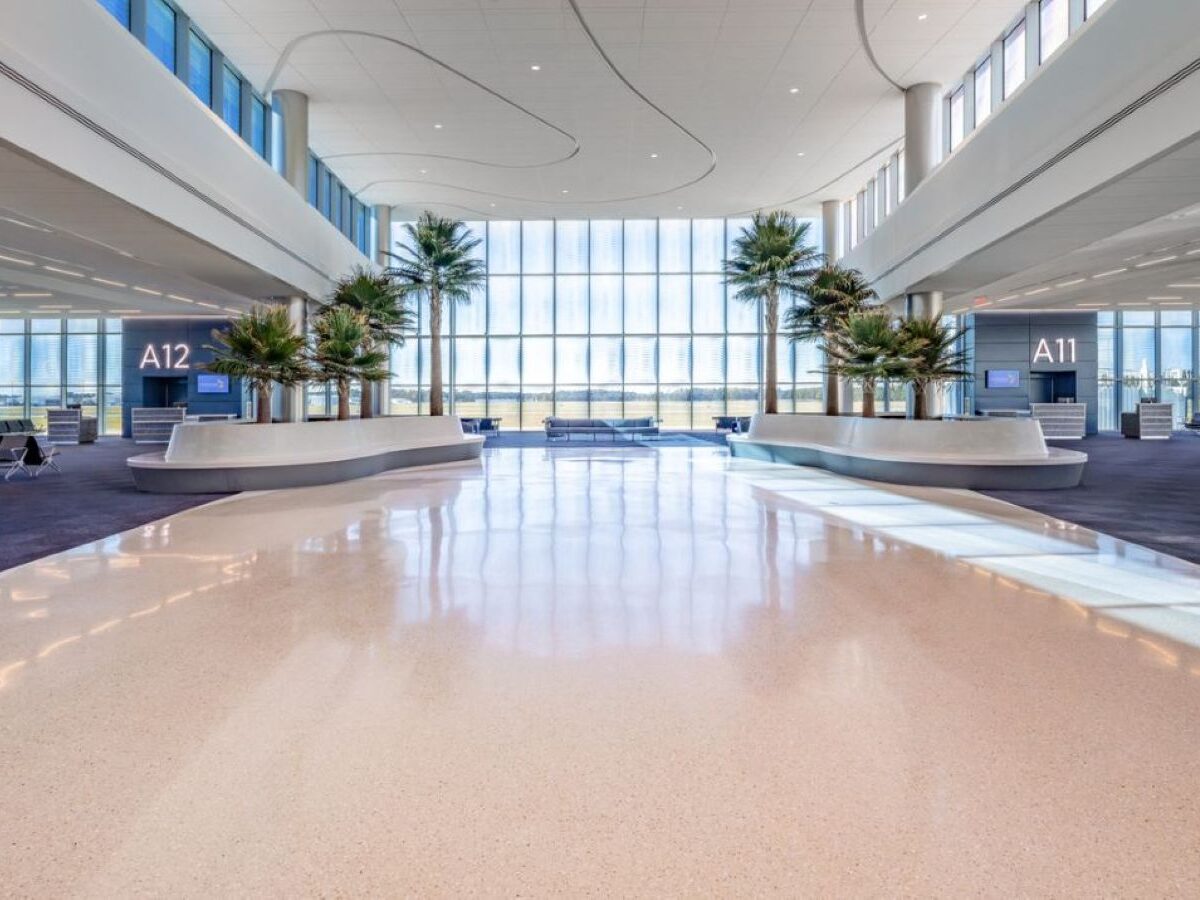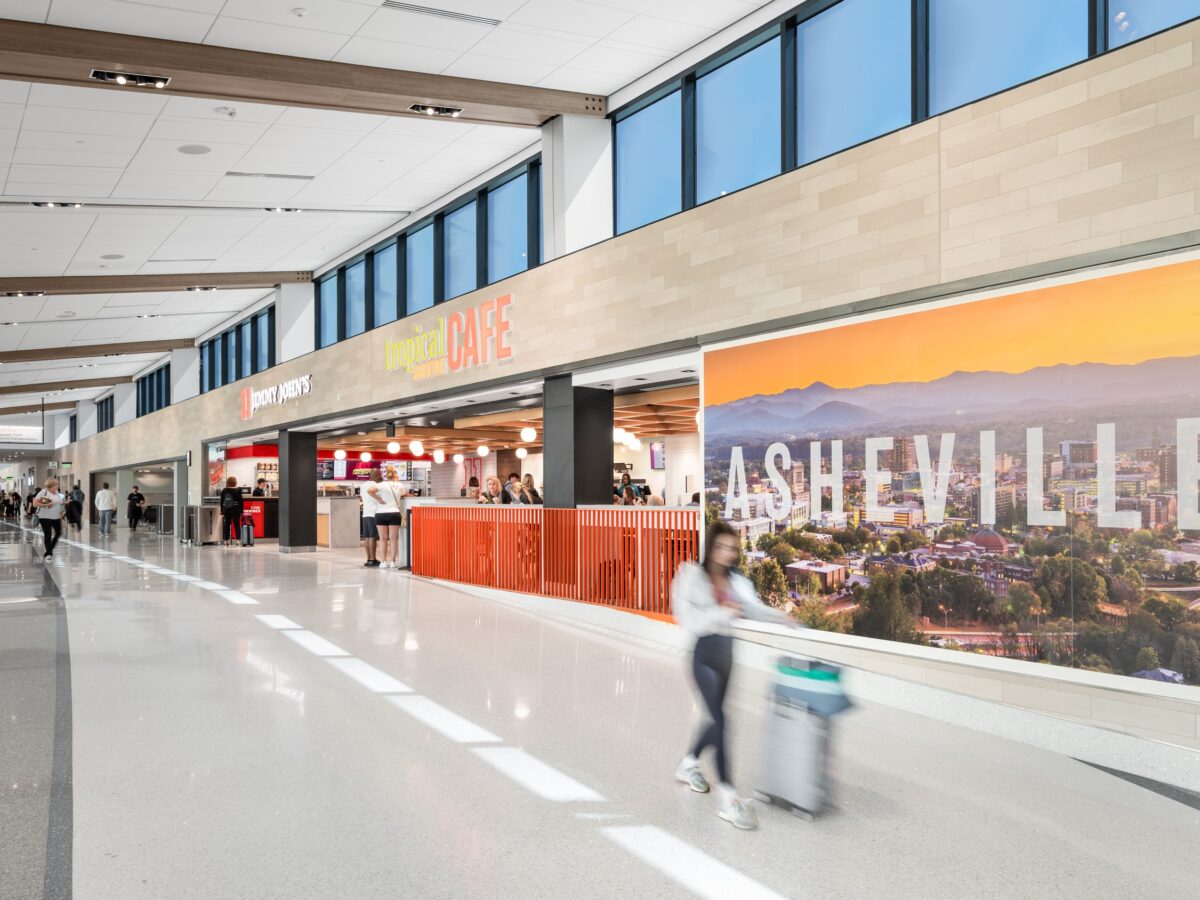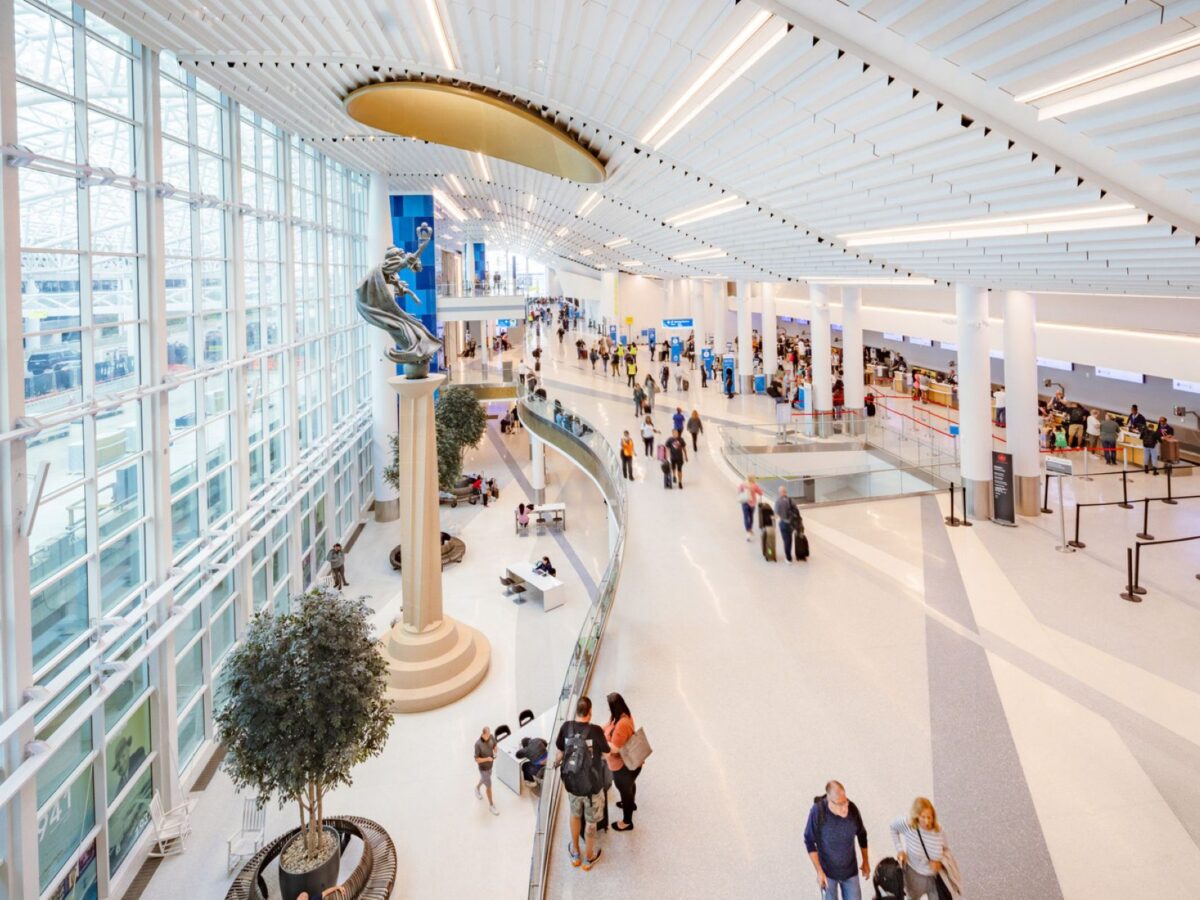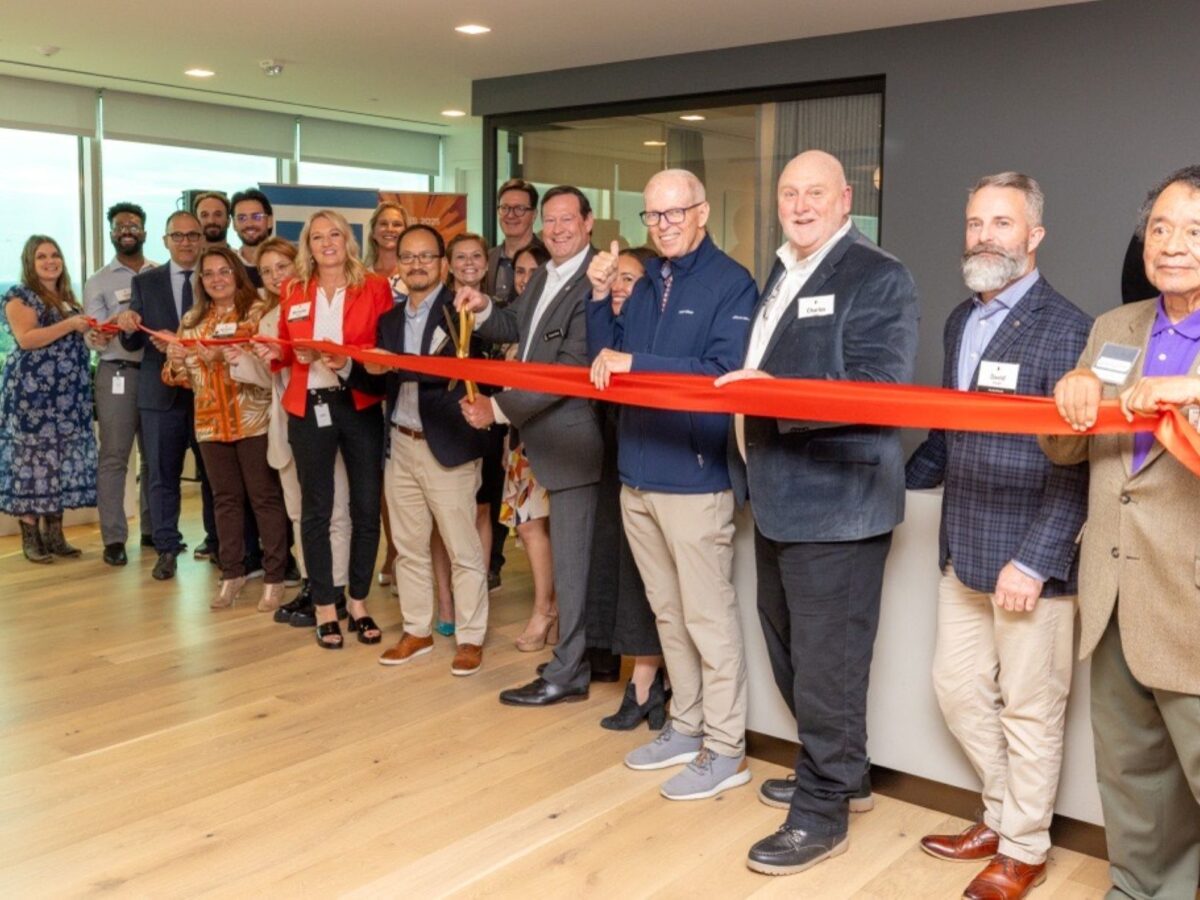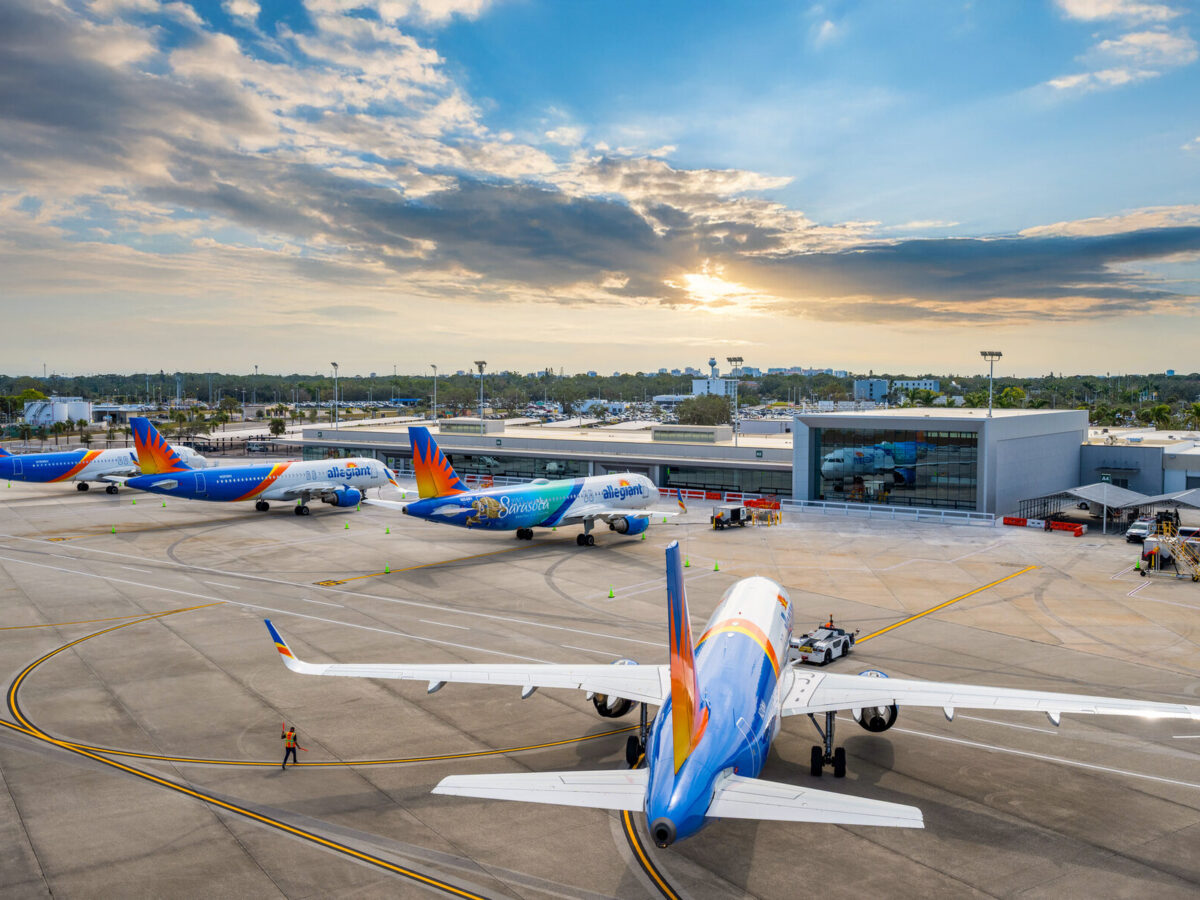In the first two parts of this series, we discussed why creating a sense of place in airports is important to the traveler’s experience and how our design visioning process helps us to consistently achieve that goal. Today, we’ll discuss the results and benefits of using that purpose to guide our process, particularly with a focus on one of our most recent projects at the Asheville Regional Airport (AVL).
When AVL leaders began their search for a design partner to expand and modernize the existing airport, their goal was to identify a creative firm that would be dedicated to understanding them, the region, and what makes their community so special. When the Gresham Smith team described our design visioning process that included connecting with the community, they were excited about such an authentic and collaborative approach to the project.
Once selected, Gresham Smith began the process with community engagement efforts, which resulted in over 3,700 voices being heard through survey responses, and in turn, played a major role in the architecture of the facility. Through that survey and several other points of research, we landed on the guiding principles of deeply rooted in place, a convenient escape and beauty through purpose. With those principles in mind, every design decision was made through the lens of whether or not it would represent the ethos of what the facility would one day be.
It was clear that both AVL leadership and the Asheville community wanted to prioritize showcasing the natural beauty of the Western North Carolina region, where Asheville is located. The Blue Ridge Mountains and French Broad River inspired natural design elements such as wood tones, a serene color palette, and natural materials. Free-flowing, curved lines along the ceilings, walls, and floor are representative of the mountain ranges, waterfalls, and winding rivers.
Ticket counters, security checkpoints, and gate counters – established and necessary elements of every airport – present an opportunity to balance functionality within the guiding design principles. The team met this challenge by incorporating various metal work designs and iron trimming, details reminiscent of the local art deco scene in town. By following the design visioning process, we can ensure that functionality meets aesthetics in a thoughtful and purposeful way.
The most inspiring things that actually came out of a public workshop was every time we talked about what they wanted this airport to represent, the word home came up over and over again, and the community talked about how every time that they would depart and every time they would return, they would see the mountain range and feel anchored to their home.
This transformation of AVL will impact the region for decades to come, anchoring people of the community to their home and welcoming travelers to their destination. As we have discussed throughout this series, airports are more than just buildings or transit hubs. They can – and should – serve as symbols of the regions they serve, creating a gateway to a welcome sense of place and acting as a reflection of the destination’s culture, history, and identity.
